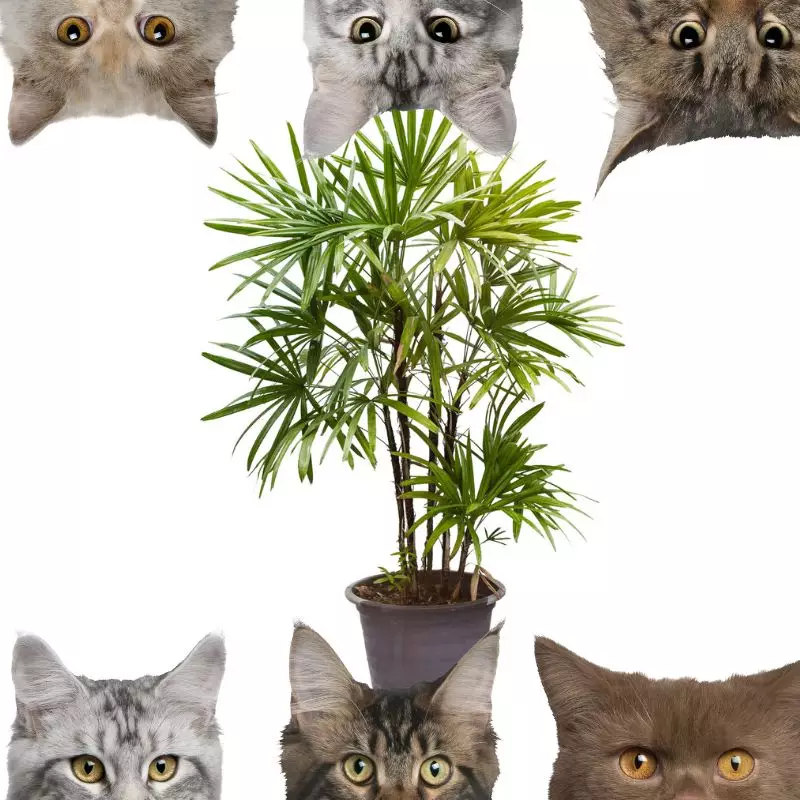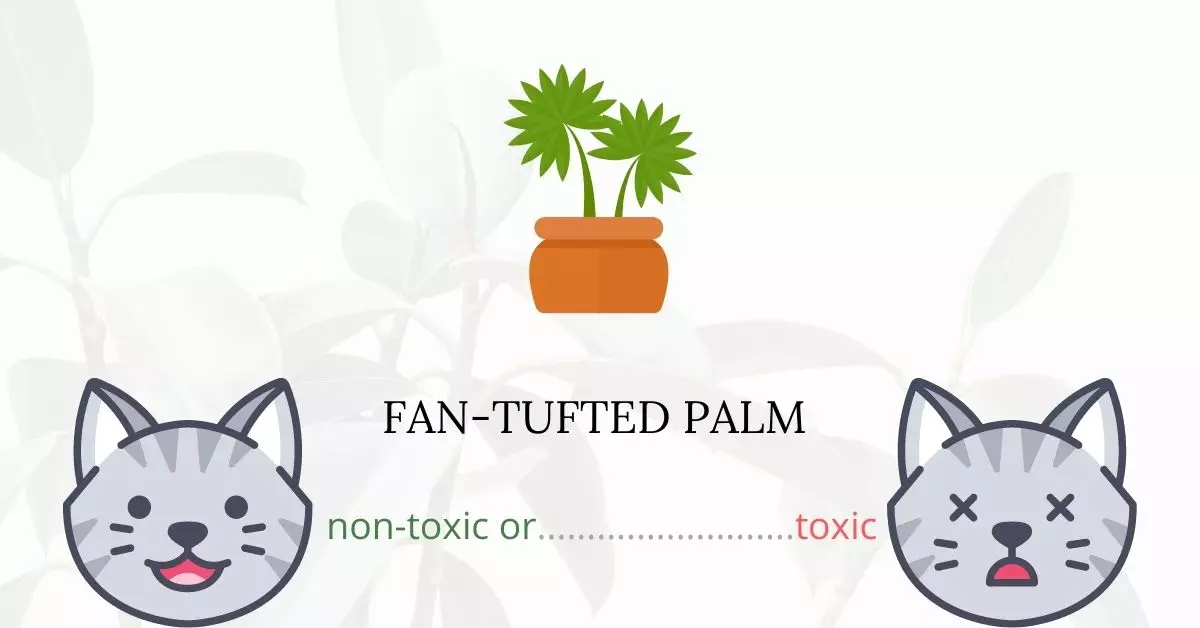Fan-Tufted Palm, also known as Lady Palm, is non-toxic to cats. According to the American Society for the Prevention of Cruelty to Animals (ASPCA), it is safe not only for cats but also for horses and dogs.
This article is the result of collaboration with a team of experienced DVMs (doctors of veterinary medicine). Their expertise, combined with our extensive research from high-authority sources like ASPCA and PetMD, ensures that we provide accurate and up-to-date information on the potential risks associated with various plants, particularly the Fan-Tufted Palm, and their effects on cats. In the sections that follow, we will delve deeper into understanding the Fan-Tufted Palm and the implications of its consumption by cats.
Can Cats Eat Fan-Tufted Palm or Lady Palm?

Yes, cats can eat a small portion of a fan-tufted palm. It is not alarming if your feline took a bite of this plant. But, it is important to remember that too much plant consumption may cause cats to have gastrointestinal distress.
Cats are naturally carnivores, thus their bodies are not designed to digest plant diets. As a result, vegetables should not be part of a cat’s regular diet.
You should also exercise caution while applying plant-care products. Most of these items include dangerous components that are toxic to your cats, especially if they have eaten a plant with toxic chemical residues.
What is a Fan-Tufted Palm or Lady Palm?

Rhapis flabelliformis is the scientific name for fan-tufted palm, which is also known as lady palm, broadleaf lady palm, and bamboo palm. It is a fan palm Arecaceae species that is most likely endemic to southern China and Taiwan. It does not exist in the wild; all known plants are from farmed populations in China.
The fan-tufted palm grows in multi-stemmed clumps up to 4 meters tall and 30 mm in diameter, with glossy, palmate evergreen leaves separated into wide, ribbed segments. In early plants, leaf segments are single or few, increasing to a dozen or more in adult plants; segments are separated to the petiole. Unlike most other palms, the leaf tips are saw-toothed and appear on thin petioles ranging in length from 20 to 60 cm.
The genus name ‘Rhapis’ comes from the Greek word rhapis, which means ‘a needle,’ and refers to the leaf segments. Its species name, ‘excelsa,’ means ‘high,’ ‘elevated,’ or ‘tall,’ an amusing choice is given that it is not the tallest member of the genus.
Keeping Cats Away From Fan-Tufted Palm or Lady Palm

You can try to keep your felines’ paws out of your plants by trying several methods.
One method is by spraying vinegar on your plants. Cats will avoid your plants if you do this because they hate the sour odor and taste of vinegar. Another trick is by using aluminum foil which cats also dislike. The crinkly texture and sound of aluminum foil are not pleasant for them so if you place this near your plants, they will tend to avoid it.
The best method is still to train your feline companions to not touch your plants. This method may take time and longer patience but once your cat learns it, you have one less thing to worry about.
Plants to Avoid For Your Cats
If you are a cat owner and unsure if the plants growing in your yard are harmful to your cats, check out this list of toxic plants for cats. You can also check our list of non-toxic plants for cats.





